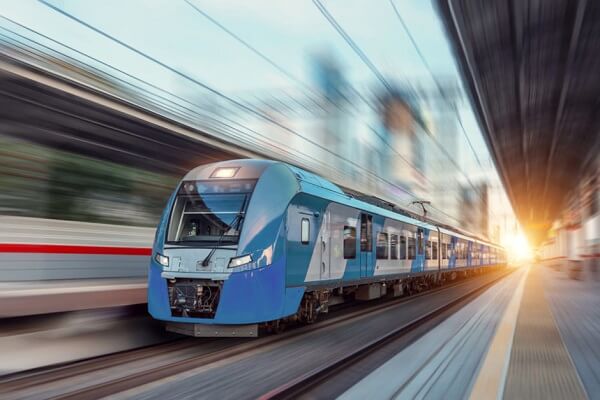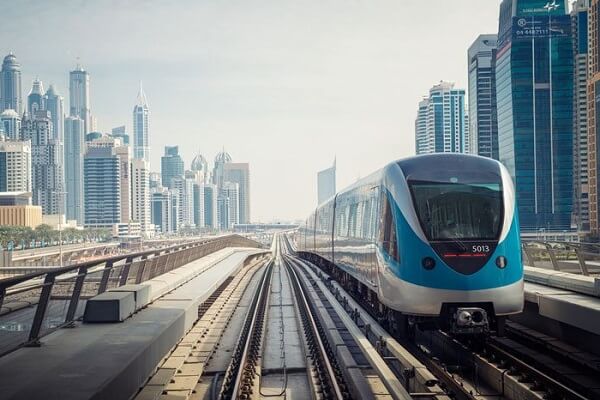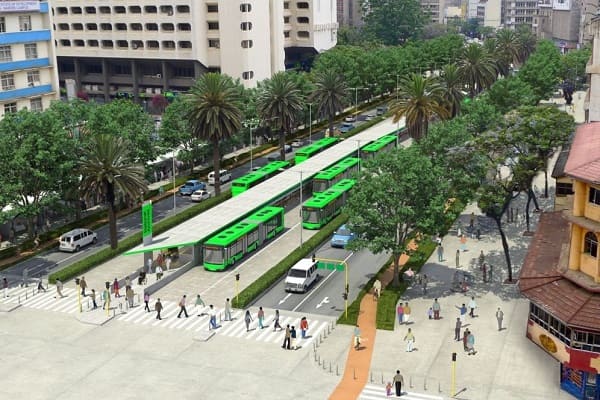 Qatar approves Saudi Rail Link Agreement, Accelerating Gulf Railway Vision 2030
Qatar approves Saudi Rail Link Agreement, Accelerating Gulf Railway Vision 2030 UP Govt plans to introduce Water Metro services in Ayodhya, Varanasi & Prayagraj
UP Govt plans to introduce Water Metro services in Ayodhya, Varanasi & Prayagraj India’s First Urban Ropeway begins Trial Run in Varanasi, Set to carry 1 Lakh passengers daily
India’s First Urban Ropeway begins Trial Run in Varanasi, Set to carry 1 Lakh passengers daily India and Bhutan to Build First-Ever Rail Link: ₹4,033 Cr Project to Boost Regional Connectivity
India and Bhutan to Build First-Ever Rail Link: ₹4,033 Cr Project to Boost Regional Connectivity Patna to launch Eco-Friendly Water Metro; Trial Run soon between Digha and Kangan Ghats
Patna to launch Eco-Friendly Water Metro; Trial Run soon between Digha and Kangan Ghats Air India Group set to launch Flights Operations from Navi Mumbai International Airport
Air India Group set to launch Flights Operations from Navi Mumbai International Airport Chennai to launch 25-Year Mobility Plan with Unified QR Ticketing and One-App Transit System
Chennai to launch 25-Year Mobility Plan with Unified QR Ticketing and One-App Transit System Kochi Metro bags ₹4.4 crore contract to prepare DPR for Mumbai Water Metro Proejct
Kochi Metro bags ₹4.4 crore contract to prepare DPR for Mumbai Water Metro Proejct Navi Mumbai International Airport set for September launch; IndiGo and Akasa Air to lead Operations
Navi Mumbai International Airport set for September launch; IndiGo and Akasa Air to lead Operations Noida International Airport to be Inaugurated on October 30, Commercial Flights in 45 Days
Noida International Airport to be Inaugurated on October 30, Commercial Flights in 45 Days
Electrification and advanced safety systems to produce efficient railway systems

Railway systems play a crucial part in the economy and civilization of any country. Development of modernized, technologically advanced, and environment conserving infrastructure of railways is among the top priorities of many countries across the world. The developments in many areas of railway system such as electrification, safety, track flaw detection, and others are ongoing.
Determining the need to conserve environment, railway authorities have been carrying out electrification of entire system and introducing innovative methods to achieve targets in terms of environment conservation. Moreover, universities and private firms have been launching innovative safety systems that are backed by technology. These systems are useful for track flaw detection and prevention. They help in prevention of accidents regarding derailments and avoid catastrophic damages. Moreover, different methods have been implemented to ensure safety of railway and passengers.
The demand for safe, advanced, and innovative railway systems will rise in the coming years. According to the report published by Allied Market Research, the global railway system market is estimated to generate $37.36 billion by 2026. Following are some of the activities taking place across the world.
The electrification of railway systems is one of the crucial steps toward the environmental conservation. Many countries and their governments have been launching new projects to achieve environmental objectives in the next few years. However, some municipal bodies already carried out huge electrification of their zones. The North Eastern Railway (NER) of Indian Railways already carried out nearly 75 percent electrification of the routes. It has been observed that the total cost saved following the electrification of main routes is nearly 361 Crore rupees. Furthermore, this zone is expected to become 100 percent electrified by the end of 2022.
The NER has become one of the popular zones in offering fast, secure, comfortable, and reliable railway transportation service in 2021. The NER also employed Capacity Utilization Factor (CUF) based solar monitoring system in 2021. This led to generation of 26 percent more solar energy as compared to the previous year. The railway authority will take different initiatives in the coming year toward achieving cent percent electrification.
Along with environmental conservation in mind and electrification, railway authorities have been taking safety measures into consideration and taking different steps toward achieving optimum safety levels on the railway lines. Researchers from the Loughborough University and the University of Sheffield developed an on-board system for detection of leaves on the lines. Researchers from both universities collaborated engineering company Perpetuum for development of the system that would determine low adhesion hazards. Following the detection of leaves in real time, an updated map regarding potential hazards will be created. The minimum adhesion level needs to be maintained to ensure safety, reduce delays, and offer optimum traction performance.
Dr. Chris Ward, a lead researcher from the Loughborough University, highlighted that low adhesion events impact the entire railway system adversely. There have been huge investments in rail head cleaning, controlling flora along the rail lines, and detection of potential hazards. The newly-developed system ensures accuracy in detection of low adhesion locations on rail lines. This will enable rail authorities across the U.K. to respond rapidly following the detection. Various actions such as rail head treatments and defensive driving can be taken to ensure safety. The detection system and algorithms will be utilized addressing the issue of low adhesion on rail lines. Network Rail will conduct tests for the system and take further steps regarding implementation.
The trend of launch of innovative systems for track inspection, tracking, and maintenance continues with automated track inspection systems. ENSCO Rail launches the Ultrasonic Rail Flaw System (URFS). The company touted this system as one of the most effective system when it comes to detection and prevention of broken rail tracks. It aims to reduce railway derailments and catastrophic damages through implementation of its technologies and skill sets. Its URFS will prevent derailments, comply with regulatory requirements, and offer safe and efficient operation for railways. The automated system will raise the accuracy of true-positive detections and measure rail conditions for predicting and preventing rail track flaws.
When it comes to safety, railway authorities have been overcoming different issues with innovative solutions. The presence of fog creates challenges in smooth running of railways and causes delays. The Central Railway (CR) authority of Indian Railways decided to address the issue of fog with installation of metal poles painted with yellow-black color. This will assist drivers and motormen during winters. These poles will be installed 100–300 meters before the signal pole. These poles will offer an insight about the density of the fog. If these poles cannot be visible, then the stationmasters can conclude that there is a high density of fog. Then they can give a warning to train drivers and motormen about foggy conditions. This will ensure safety and avoid catastrophic damages.






